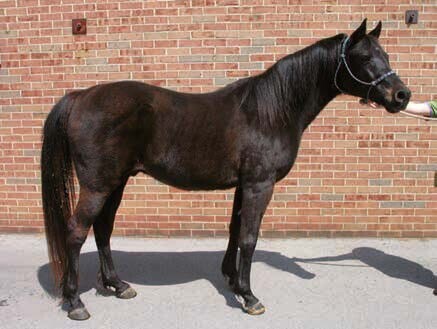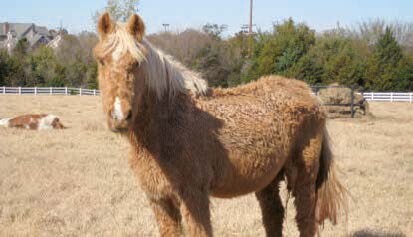Pituitary Pars Intermedia Dysfunction (PPID), was previously known in the horse world as Equine Cushing’s Syndrome.
PPID is the most common endocrine disorder in horses and ponies, with as many as one in seven over the age of 15 affected. It can occasionally be seen in younger horses as well.
As such, it is something that many horse owners have heard about or will know of a horse or pony that has suffered from it. However, without first-hand experience of this condition, recognising clinical signs can be difficult and they can sometimes be put down to the horse 'just getting old'.
How does it present?
In horses suffering from PPID, the pituitary gland produces an excess of hormones which can cause imbalances in several of your horse’s normal bodily functions. This can cause a range of symptoms, which can vary depending on the duration and severity of the condition.
Some early signs to watch out for include:
Decreased athletic performance
Change in attitude/lethargy
Delayed haircoat shedding
Increased areas of hairiness
Change in body conformation
Regional fat deposits (e.g. neck)
Laminitis
Infertility
More advanced signs of the disease include:
Lethargy
Localised areas of hairiness (hypertrichosis/hirsutism)
Loss of seasonal haircoat shedding
Recurrent infections (e.g. foot abscesses or sinus infections)
Neurologic deficits (e.g. blindness)
Abnormal sweating (increased or decreased)
Absent reproductive cycle/infertility
Skeletal muscle atrophy
Regional fat deposits
Increased drinking and urinating
Laminitis
Rounded abdomen
Diagnosis and treatment
You can help your horse or pony by watching out for early signs of PPID and contacting the team at VetSouth if you think your horse needs to be checked.
We can take a single blood sample to measure the level of the hormone ACTH, which is abnormally high in horses with the disorder. This test is most useful for diagnosing early PPID if performed in the autumn.
If we find your horse or pony has PPID, we can work with you to help manage their health. There is a great medical treatment available, Prascend, which is usually quite effective at managing clinical signs. When effective treatment and management is started early, horses with PPID can expect to enjoy many more healthy, quality years.
Management strategies
In addition to veterinary treatment, there are other things you can do to help your equine friend if they have PPID.
Horses with PPID have a lower immunity to infections, so regular vaccination and worming strategies are recommended and should be discussed with your vet.
Special attention from the farrier will also be useful to identify foot abscesses and signs of laminitis.
Horses and ponies with long hair coats can benefit from clipping and regular checking of the coat and skin to identify problems that might otherwise be hidden. However, many of these clinical coat abnormalities will improve once a horse is receiving appropriate treatment.
For further information regarding the treatment and management of PPID, please contact the VetSouth team.


